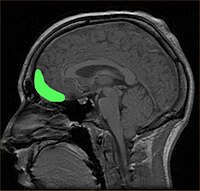
Photo from wikipedia
Impulsivity is a multidimensional construct playing a pervasive role in psychiatry and neuropsychology. Lynam et al. ( 2006 ) have developed the 59-item UPPS-P Impulsive Behavior Scale, which assesses five… Click to show full abstract
Impulsivity is a multidimensional construct playing a pervasive role in psychiatry and neuropsychology. Lynam et al. ( 2006 ) have developed the 59-item UPPS-P Impulsive Behavior Scale, which assesses five distinct impulsivity dimensions: positive urgency, negative urgency, lack of perseverance, lack of premeditation, and sensation seeking. The short, 20-item version of the UPPS-P (SUPPS-P; Billieux et al. Comprehensive Psychiatry, 53 (5), 609–615, 2012 ) has been developed and adapted into several languages, including English, French, Italian, Spanish, and Arabic. The aim of the present study was to test four theoretical models of the SUPPS-P in a large sample of Hungarian adults. A total of 15,703 participants (64.76% male; M age = 33.42 years, SD = 11.06) completed the SUPPS-P using an online questionnaire. Confirmatory factor analyses corroborated the first-order five-factor model of impulsivity and a hierarchical model representing three higher-order constructs (urgency, lack of conscientiousness, sensation seeking), whereas the one-factor and three-factor model were not supported. The factor structure of the SUPPS-P preserved the original, theory-driven structure of the UPPS-P model and this instrument demonstrated good internal consistency. Hypersexual behavior consequences were positively associated with most SUPPS-P components, thus criterion validity was also supported. The SUPPS-P had strong psychometric properties that reflected the theoretical structure of the original UPPS-P model, thus it constitutes a theoretically grounded and time saving multidimensional instrument for assessing impulsivity.
Journal Title: Current Psychology
Year Published: 2020
Link to full text (if available)
Share on Social Media: Sign Up to like & get
recommendations!